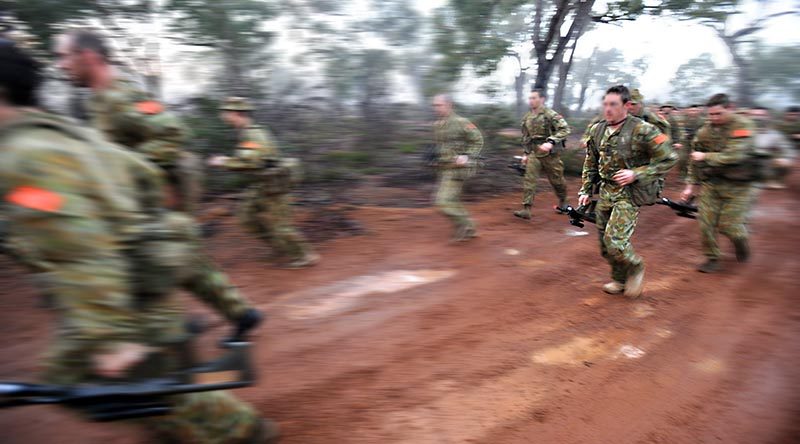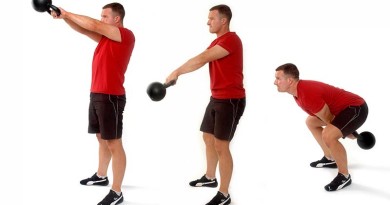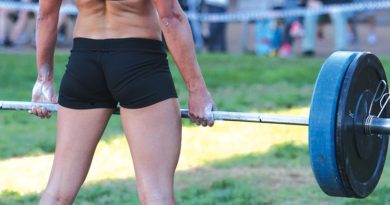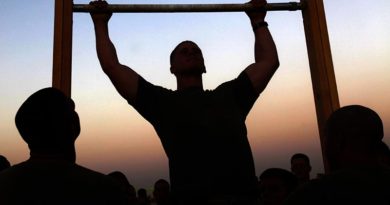Military Fitness – Part 31


Fitness testing is a subject that is familiar to every member of the military. Inevitably you will have had to pass a fitness test before recruit training and then, every six months, you probably have to pass your service’s basic fitness test.
Beyond these basics tests the ultimate fitness test for Australian military personnel these days is the Special Forces Entry Test or SFET.
In this article I want to outline a few reasons why this test is different to the standard fitness tests and give you some specific tips on how to train for and optimise your performance in each of the tests.
Why is SFET different?
On the surface SFET looks like a pretty standard test except that it has a lot more components.
This first difference is actually quite important.
In general when preparing for a standard test with three or four components, my advice is for people to practice all the components relatively frequently.
However, with 10 separate tests you can’t really do this.
I recommend rotating through the tests with a bit of extra focus on any areas that you feel you are weak in.
This brings me to the second difference.
In SFET there is no pass/fail mark or grading to measure your training against.
The reason for this is that SF selection is as much of a mental game as it is a physical one.
The selection panel don’t want people who can achieve a number – they want people who will give a 100% effort.
In essence, during SFET you are being rated against everyone else who attempts the test at the same time.
In order to give you a starting point, however, I have provided an indication here of the minimum you should be aiming for in each test to have a good chance of being panelled (results based on some clients of mine who were panelled for SF selection in February 2013).
 Couch to Commando by Don Stevenson is a 165-page e-book with programs in 6 different levels to progress anyone from couch potato to commando candidate.
Couch to Commando by Don Stevenson is a 165-page e-book with programs in 6 different levels to progress anyone from couch potato to commando candidate.
20% of proceeds from the sale of this e-book will be donated to Soldier On
Tips for maximum performance on the specific tests
My main advice for passing SFET is to develop a high level of fitness over a period of at least six months of specific training.
In theory, if you have a high level of fitness then you would pass SFET without any specific practice of the test elements.
However, as I’ve mentioned before, in SFET your aim is to maximise your test score based on your current level of fitness.
In several of the tests there are simple techniques you can use to make sure you get the best score on the day.
Vertical leap
Training tip: Include deadlifts, power cleans and one-arm dumbbell snatch in your training.
Test Technique: Start the test balanced on the balls of your feet with both hands stretched as far above your head as possible. Commence your attempt by swinging your arms down and dropping your heels onto the ground into a quarter squat then explode up. This technique takes advantage of the stretch reflex in the legs to store and reuse energy, and I have seen people INSTANTLY add 3 to 5cm to their vertical jump using this technique.
Sit and reach
Training tip: Use contract relax stretching of the hamstrings, calves and glutes in your program.
Test Technique: As you set up and prepare for the test, take a deep breath and squeeze your abs and glutes as hard as possible. When you start to push the slider forward, breath out smoothly and relax as much as possible. Keep breathing out all the way to the end. The difference between the starting tension and the relaxed phase allows your body to move through a greater range of motion.
Pushups
Training tip: Pushups are a great exercise to practice frequently at 50 to 70 per cent of your rep max. A few sets of sub maximal pushups throughout every day can be a very good way to improve your numbers.
Test Technique: Make sure you are familiar with the cadence and practice it. Start the test as relaxed as possible and when you start to fatigue during the test, recruit more neural drive by squeezing your glutes, bracing your abs and trying to grab the ground with your hands. These tips can easily add 5 to 15 reps to your total over a long set.
Situps
Training tip: The situps in SFET are done for single reps that get progressively harder. Train for them with Turkish getups and weighted situps.
Test Technique: The SFET situps are done without anchoring your feet. If you jerk or rush you’ll lift your feet and fail the level. Aim for a smooth controlled curl up. Imagine digging your feet into the ground.
SFET standards
- vertical leap – 50cm +
- sit and reach – 20cm+
- push ups – 75+
- sit up – level 5
- heaves – 15
- agility – under 10 seconds
- beep test – 11.5
- yoyo – stage 8
- pack march – under 45 minutes
- swim – under 13 minutes
.
.
.
.
.
.
.
.

.
.






